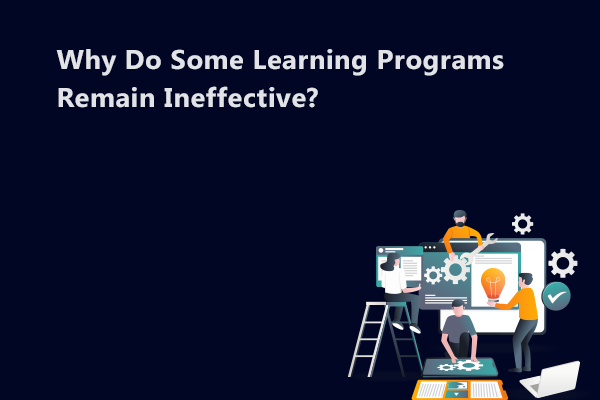
Why Do Some Learning Programs Remain Ineffective?
Many corporate training programs remain ineffective owing to lack of purpose, incorrect timing, and content flaws. Global organizations spent $360 billion on training courses in 2018. Was it worth the money spent?
Let us consider the statistical data for a clear understanding.
- 1800 managers surveyed across 50+ global MNCs revealed that 75% of them were dissatisfied with the outcome of corporate training courses in their companies
- 65% of employees reported they do not possess the necessary skills to perform their jobs.
- Only 15% of employees successfully applied the skills taught in online corporate learning courses.
How can we increase the effectiveness of L&D programs? As the market is moving towards the concept of lean manufacturing and lean organizations, we need to adopt lean thinking in L&D programs as well. Corporate training programs that support lean learning ensure delivering the right content at the right time for maximum knowledge retention. To promote lean learning, leaders should provide a clear idea of what the training encompasses, make efforts to enable employees to apply learned skills in real-life situations, receive immediate feedback, refine the process and repeat the cycle.
4 Reasons Why Corporate Training Courses Remain Ineffective
Not Knowing The Purpose Of Learning
In a book published by Bryan Caplan, The Case Against Education, the purpose of learning is usually for flaunting or signaling to potential employers for better opportunities. Today’s employees use credits for getting a promotion and do not apply to develop actual job skills. Employers fall into the trap by focusing on the credits and not looking at the impact created on the business. It is a vicious cycle that leads to flawed business practices and outcomes.
Learning At The Wrong Time
Human beings learn best when the lessons are put into everyday practice. When candidates apply their skills in real-life situations, they become motivated to learn more. But, corporate training programs deliver uniform topics following a fixed schedule that bears no relevance to the employees’ role in the organization. It is the primary reason why L&D programs do not deliver optimal results.
Learning The Wrong Things
The training mandate follows a set curriculum such as conflict resolution, decision-making, problem-solving, etc. may not be relevant for an individual. Aligning corporate training courses with the needs of a role/position is crucial for successful learning. The solution to these problems is customized training that addresses individual learning and development requirements.
Forgetting What We Learn Quickly
You can blame it on evolution but that is how human beings are. We quickly forget what we learn. The Forgetting Curve discovered by a German psychologist, Hermann Ebbinghaus, revealed that 75% of information is forgotten in the next six days if knowledge and skills are not applied immediately.
One way to combat this problem is by adopting space learning. It involves spreading the curriculum over time and delivering knowledge in small batches periodically for significant improvements in knowledge retention.
6 Ways To Increase Effectiveness Of Corporate Training Programs by Leveraging Lean Learning
Lean learning helps your organization stay competitive in today’s market. It involves learning the core competencies of training programs using short and affordable training sessions for a quick capability upgrade. Like lean manufacturing, lean learning cuts down knowledge wastage or loss and improves business outcomes.
- Apply Learning In Real-Life: The goal should be not to teach a specific skill to the employees but encourage them to apply innovations internally in real-life situations for measurable business benefits.
- Think 80:20: This is a unique concept developed by Tim Ferris for lean learning. It involves identifying the minimum learnable unit or MLU. For instance, if you are looking to learn French, you should learn only 20% of the words which are applicable in 80% of conversations.
- Customize Content: Corporate training courses should be personalized to suit individual needs. Based on learning style, adaptability and performance it is advisable to customize content for optimal learning and retention.
- Use Micro-Learning: Enroll employees in learning programs that deliver content in bite-sized digestible chunks rather than long courses that have little relevance causing information overload and minimal retention.
- Provide Ongoing Support: Give employees the necessary learning support after online sessions via instant or voice messaging or chats so learning can be continuously applied to everyday challenges without any interruption.
- Shifting From Credits To Business Outcomes: Lean learning involves moving the focus from measurable credits or CPEs to evaluating the business outcomes generated. CPEs are flawed and give you the wrong idea about employee performance and productivity. Business outcomes are the right method to quantify the growth and development of an organization directly linked to better performance.
Take-Home Message
Eric Ries, the author of The Lean Startup, stated that the only way to succeed in business is to learn faster than your market competitors. Thus, investing in online, customized corporate training programs led by industry experts at www.learnow.live is the only way to drive your organization to succeed in today’s competitive world.
